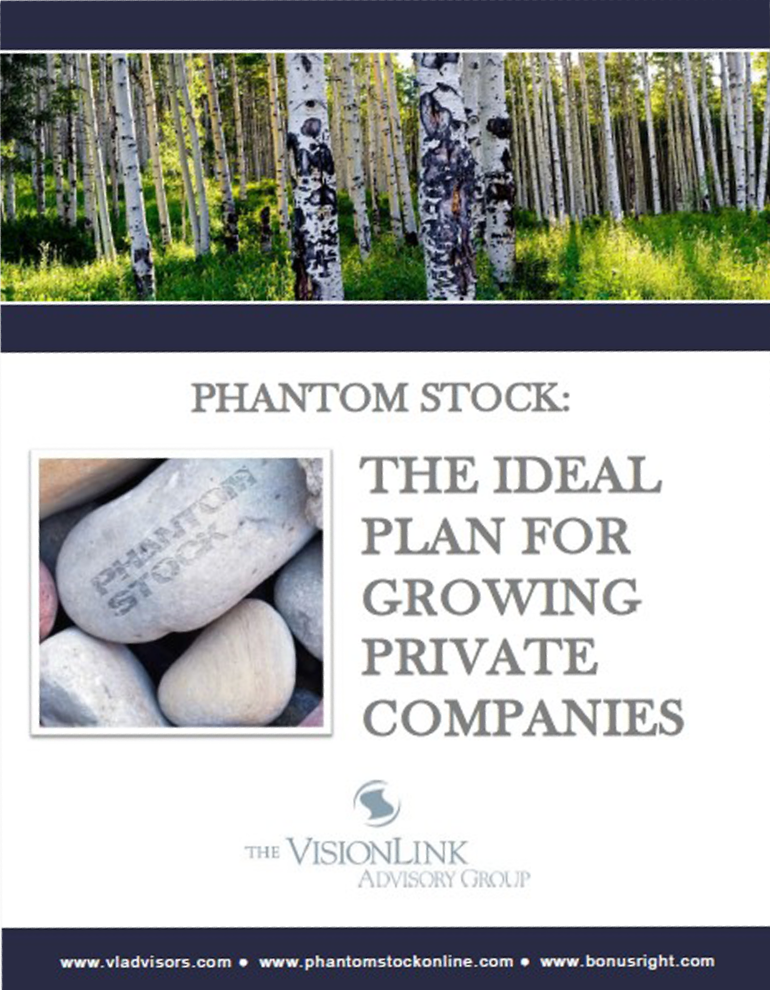
Free Report
Phantom Stock: The Ideal Plan for Growing Private Companies
Reward Value Creation without Diluting Owner Equity
VisionLink is commonly engaged to help leaders of privately-owned, mid-sized businesses create long-term incentive plans (LTIP). The goal of an LTIP is to share value with employees that help to advance the company's success. Especially with small and medium sized businesses, it can be an objection of shareholders to share actual stock with employees, and that is where phantom stock comes in. Phantom stock is a type of deferred bonus—the value of which is tied to market inflation or a predetermined formula outlined in the business's incentive plan.
In this report, Phantom Stock: The Ideal Plan for Growing Private Companies, you will learn why phantom stock is the perfect answer to sharing value with these key employees, while not diluting equity!
Ready to Speak with a Phantom Stock Expert Now?
Call 1-888-703-0080 or complete our contact form.